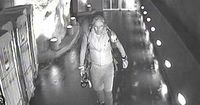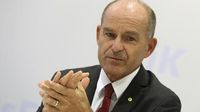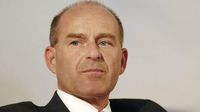The mysterious case of Karl-Erivan Haub, the former CEO of the Tengelmann Group who vanished during a ski tour in 2018, took a dramatic twist this month as new evidence surfaces. Surveillance images allegedly captured in Moscow appear to show Haub years after his disappearance, raising questions about his fate and the implications for his family.
Declared dead in May 2021 by the Cologne District Court, Haub's mystery endures, now intensified by the release of photographs claimed to feature him taken on February 19 and 20, 2021. According to RTL reports, two independent assessments from forensic experts suggest a 99 percent and 85 percent probability, respectively, that the man in the images is indeed Karl-Erivan Haub, whose disappearance remains one of the most intriguing unsolved cases in German business history.
Haub was last seen alive on April 7, 2018, near the Klein Matterhorn in Zermatt, Switzerland, prior to what was presumed to be a fatal skiing accident. His family launched extensive search operations which were called off in October of the same year. Officially, he was declared dead three years later, followed by a court decision that awarded his family a staggering 1.7 billion euros in his absence. The family sold their stakes in the company to Christian Haub, Karl-Erivan’s brother, who now runs the Tengelmann Group.
The emergence of these new surveillance images comes after investigative work by private investigators commissioned by Christian Haub himself, who allegedly paid over one million euros to acquire this critical evidence. However, doubts linger regarding the authenticity of these images, as the original data that could definitively prove when and where they were taken is reportedly missing. This opens the possibility of either manipulation or outright forgery.
Haub's brother, Christian, initially claimed in court that he had no substantiated evidence his brother was still alive but has since faced scrutiny after the photos surfaced. Initially denying knowledge of the images, his legal representative later stated he had indeed seen them but firmly believes that the man depicted is not his brother. "Christian Haub has ‘seen the pictures in the meantime,’ but is ‘certain that they do not show his brother,’” remarked Mark Binz, attorney for Christian Haub, asserting the doubts shared by his client.
Adding more fuel to this enigmatic fire, reports indicate that before Haub’s planned disappearance, he had been in contact with a woman named Veronika E., an event manager based in St. Petersburg. Just hours before his disappearance, they engaged in two lengthy phone calls from Zermatt, lasting an hour and a half. Over the preceding days, they communicated extensively, suggesting a close relationship that fueled speculation regarding Haub's intentions.
Links between Haub and Russian interests had previously aroused suspicion, particularly concerning his business dealings, including a proposed venture to establish 150 Plus discount stores in Russia that ultimately failed, resulting in millions of euros allegedly lost through dubious channels. Compounding these intricate relationships was the connection to the late oligarch Sergej Grischin, who recently passed in mysterious circumstances, further entangling Haub's narrative with Russia’s shadowy elite.
The fallout from the photographic discovery could have significant consequences. Given allegations of possible perjury, should Christian Haub be found culpable for misrepresenting facts concerning his brother’s existence, he could face legal action for his previous court testimony that denied Karl-Erivan's continued life. It creates a potential conflict for him, positioned between familial loyalty and legal accountability.
Amidst these developments, speculation surrounding Karl-Erivan Haub's fate is interwoven with personas believed to have assisted or facilitated his possible disappearance. Journalistic research conducted by RTL's Liv von Boetticher highlights the disturbing possibility that Haub's mistress connected with the Russian domestic intelligence service (FSB), fueling theories of a staged vanishing act.
In the wake of the revelations about the surveillance images, public opinion remains sharply divided. Many are now questioning not only the physical reality of Karl-Erivan Haub but also the integrity of those who claimed to act in his best interests in the wake of his first presumed death. As the investigation continues, fresh inquiries hover over whether one of Germany’s wealthiest figures truly engineered his own disappearance or if he fell victim to the dark and convoluted world of international intrigue.
This case exemplifies how financial empires, family legacies, and personal relationships intermingle in perplexing ways. As evidence continues to surface, the story of Karl-Erivan Haub evolves—leaving the public riveted by the possibility that he may not be as far gone as first thought.




